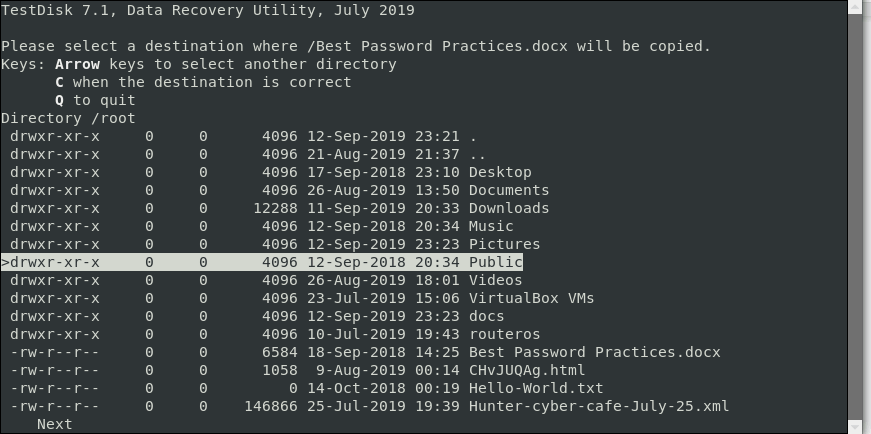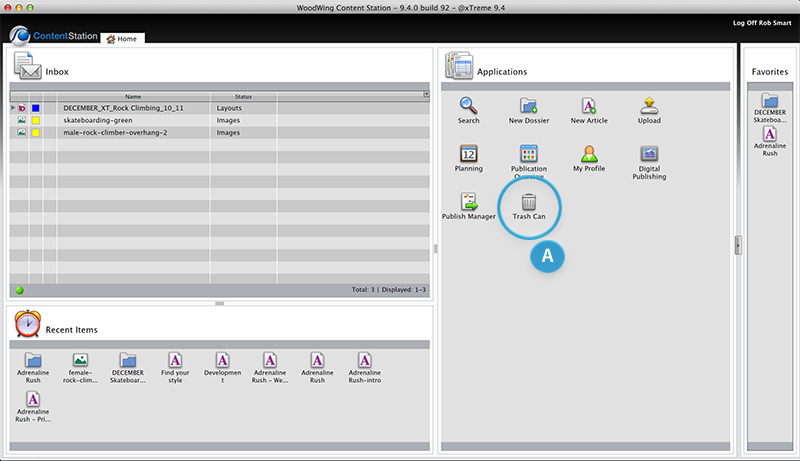

- #RECOVERING DELETED FILES USING BASH ON MAC WINDOWS 8#
- #RECOVERING DELETED FILES USING BASH ON MAC FREE#
If using secondary internal HD (suspect the same for external HD) for recovered file import (from main HD, where the files originally were), it’s necessary to make a directory, into which the files will be put in on secondary HD. Recovered files can be saved on any (including network) disks accessible by the host operating system. Such images are fully compatible with the images created by R-Drive Image, but incompatible with the old versions of R-Linux. Images can be either simple exact object copies (Plain images) compatible with the old versions of R-Linux, or compressed images that can be compressed, split into several parts, and password-protected. Such image files can be processed like regular disks. Dynamic partitions over GPT are supported as well as dynamic partitions over MBR.Ĭreates image files for an entire hard drive, logical disk, or its part. Recognition and parsing Dynamic (Windows 2000/XP/Vista/Win7), Basic, GPT, and BSD (UNIX) partitions layout schema and Apple partition map. Supported file systems: Ext2/Ext3/Ext4 FS (Linux) only.
#RECOVERING DELETED FILES USING BASH ON MAC WINDOWS 8#
Windows variant: Win2000, XP, 2003, Vista, Windows 7, Windows 8.  Linux variant: Linux, kernel 2.6 and above. Standard "Windows Explorer" - style interface. This is especially useful when new bad sectors are constantly appearing on the disk, and the remaining information must be immediately saved. In this case, R-Linux can first copy the entire disk or its part into an image file and then process the image file.
Linux variant: Linux, kernel 2.6 and above. Standard "Windows Explorer" - style interface. This is especially useful when new bad sectors are constantly appearing on the disk, and the remaining information must be immediately saved. In this case, R-Linux can first copy the entire disk or its part into an image file and then process the image file. 
In this case, R-Linux can scan the disk trying to find previously existing partitions and restore files from found partitions.
When the partition structure on a disk was changed or damaged.  After the partition with the files was reformatted, damaged, or deleted. Removed by virus attack, power failure, or system crash. However, unlike R-Studio, R-Linux cannot recoverĭata over a network or reconstruct RAIDs, or provide object copy. Settings to provide the fastest and most reliable file recovery for Same InteligentScan technology as R-Studio, and flexible parameter
After the partition with the files was reformatted, damaged, or deleted. Removed by virus attack, power failure, or system crash. However, unlike R-Studio, R-Linux cannot recoverĭata over a network or reconstruct RAIDs, or provide object copy. Settings to provide the fastest and most reliable file recovery for Same InteligentScan technology as R-Studio, and flexible parameter #RECOVERING DELETED FILES USING BASH ON MAC FREE#
R-Linux is a free file recovery utility for the Ext2/Ext3/Ext4 FSįile system used in the Linux OS and several Unixes. I saved mine and my friends behind many times before. I worked at a company where they used the commercial version, 9/10 times it recovers everything you want. R-Linux(Recovery studio) is one of the best.
that is a lower case L in the -l option. I did the mount command first to figure out what device ( /dev/sda7) I need to pass to extundelete (output is truncated for brevity). You obviously need to replace /home with your mount of interest that example is for me prepping my /home mount for use with extundelete. The trick to getting around this is to do a 'lazy' unmount: $ mount you were likely working in your home directory, and a zillion processes are hooked into your home directory, so good luck with that. To clear this 'properly' requires shutting down all processes accessing the file system. you'll often get the ' device is busy' message. Unmounting the drive on a live system can be tricky. Note: extundelete requires you to unmount your drive to work properly (this is a good idea to do ASAP anyway, to avoid potentially overwriting the hopefully-recoverable bytes in the deleted files). Extundelete is really great if your file system is ext3 or ext4.








 0 kommentar(er)
0 kommentar(er)
